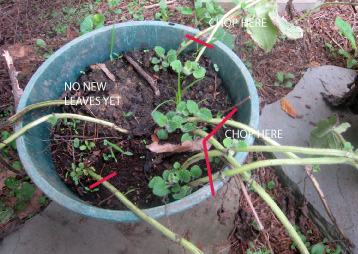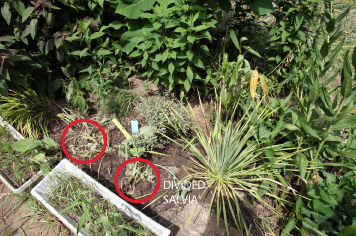I use to be afraid and too intimidated to divide my perennials. I started out a few years ago dividing hosta (when they would get too big for their spot). They are one of the easiest plants to divide. Take them out with a spade (this typically requires lots of heavy lifting), remove them from the hole and divide with a big saw, making sure to leave some leaves and roots on each section. Alternately you can take a spade and try to chop off a section and leave a portion of the plant in its place. Hosta are typically quite strong and thrive on being divided. However with most other perennials I was nervous about killing the plants! The rest of my perennials I started dividing purely by accident. I would be moving a plant and discover that as I was digging it up to move to a new location that it could be easily split into several plants (at which point I couldn’t help myself). Typically, I try to leave one bigger plant (to try and ensure its survival) and plant the smaller ones in new locations (and discard any really woody or rotted portions). Now that I know more about a lot of my perennials, I have discovered that a number of perennials prefer to be divided (i.e. when you see the middle part dying out or the plant seems to have lost some of its vigor). One of my favorite activities is pulling up a plant and seeing how many plants I can get out of it! Depending on the plant, dividing is done with one of a couple of methods. The best way to determine how to divide it is to pull it out and carefully wash off the dirt. A number of plants can be divided by simply teasing apart the roots and sniping the plants apart (i.e. like Salvia). Woodier roots will require a saw or clippers (i.e like daylilies). Typically plants with tap roots should not be divided (i.e. the root looks like a carrot such as Baptisia). Fortunately if you aren’t sure it is very easy to look up what type of root most perennials have. One downside to this is that the area where you pulled out the plant will look kind of sad for a while (which calls for dividing in early spring or the fall to minimize the bare spots during the prime garden season).
A couple of weeks ago I dug out one of my huge ‘purple rain’ salvia to divide (and because I wanted to rearrange some of the plants in the bed). This time of year is not the ideal time to do this! Early/mid spring or fall is much easier on the plants (and requires less watering), but sometimes I need to divide in non-optimal times. So is the case with my salvia. When I dug the plant up, I managed to divide (by removing the dirt from the roots and pulling apart the roots, while leaving some leaves on each root) the plant into about 10 plants. I put a couple back near the original location, with my new Yucca and the rest into a couple of pots filled with compost. I added some compost to the the plants that I put back in the ground. I also cut back the flowers, so the plant would concentrate its efforts on it roots rather than its flowers. I also watered every other day (when it didn’t rain) for the first week and a couple of times a week for the first month or so. Whenever I do something like this I hope for about a 75% success rate. I have found that it is unrealistic to assume that all of the plants will take (especially this time of year). However, less than 2 weeks later I have new leaves starting to grow at the base of all but one of the plants! Today I am going to chop off the older larger leaves and stems down to the new leaves.
So don’t be afraid, go out and divide and make more plants! Happy gardening!















Congratulations on your high success rate with the salvia. Maybe one day, with your help and encouragement, we will be dividing plants together in my garden.
I’m sure we will be in no time! Do you want some of these salvia?